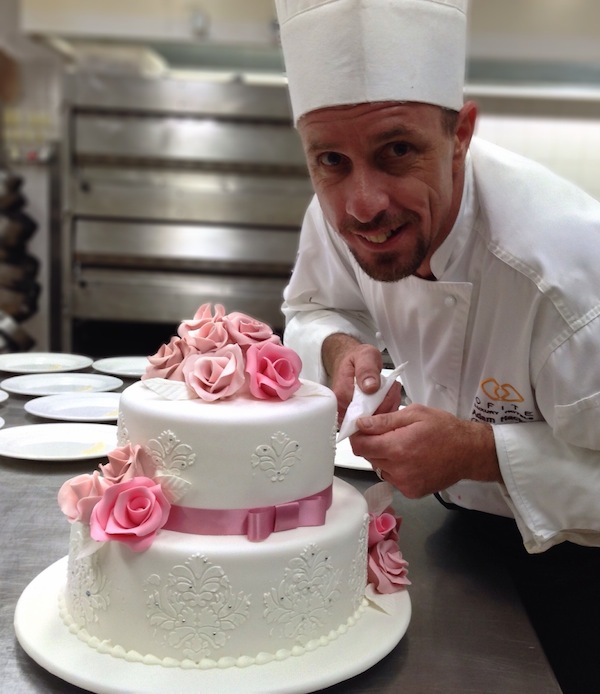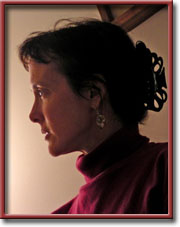Chefs
Speculative Friction
“Then there were the couples that had been kept forcibly apart until that point, though they had yearned for one another across unsurpassable distances long or short, such as the Rockies and the Alps; the Fire Bird and the Lady of the Lake; and the mechanical bull in Bucky’s Bar in Residio, TX, and the asphalt of Interstate 10.”—Claire Bateman
By Claire Bateman

 GREENVILLE South Carolina—(Weekly Hubris)—3/10/2014—So there the world was, right smack up against the proverbial edge of time. No one was surprised that some people were leaping from skyscrapers while others were attempting pointless last-minute conceptions of offspring; and that in every city and town, acts of extraordinary altruism and vindictiveness had become so common as to go unreported. And no one was surprised that there was a spike in the number of couples suddenly eager to be married, but the spike was so dramatic, in fact, and the usual officials (rabbis, priests, justices of the peace, notaries public, and ships’ captains) were so beleaguered, that a squadron of kamikaze chefs had to be deployed to perform emergency nuptials for the multitudes of entities and identities demanding official union before the end of all things.
GREENVILLE South Carolina—(Weekly Hubris)—3/10/2014—So there the world was, right smack up against the proverbial edge of time. No one was surprised that some people were leaping from skyscrapers while others were attempting pointless last-minute conceptions of offspring; and that in every city and town, acts of extraordinary altruism and vindictiveness had become so common as to go unreported. And no one was surprised that there was a spike in the number of couples suddenly eager to be married, but the spike was so dramatic, in fact, and the usual officials (rabbis, priests, justices of the peace, notaries public, and ships’ captains) were so beleaguered, that a squadron of kamikaze chefs had to be deployed to perform emergency nuptials for the multitudes of entities and identities demanding official union before the end of all things.
Even through the chaos it became apparent that each of these intended unions fell into one of two categories. There were marriages between individuals or substances that had previously evinced nothing but disdain for one another, such as the supermodel Fiona Finster, and her paperboy (or “media representative,” his nomenclature of preference); the French and English languages (as well as, appallingly, certain French and Californian wines); and the Talking Phone Book and the Real Yellow Pages. Then there were the couples that had been kept forcibly apart until that point, though they had yearned for one another across unsurpassable distances long or short, such as the Rockies and the Alps; the Fire Bird and the Lady of the Lake; and the mechanical bull in Bucky’s Bar in Residio, TX, and the asphalt of Interstate 10. Affinities and alliances of the heart—what to make of them? No one knew, just as no one had ever known.
But what shocked everyone was that the chefs were in as much if not more demand for divorces, ruptures, and “extractions.” The liquid components of the White Russian, for instance, so that vodka could blaze away on its own, leaving the milk to peaceably contemplate the universe. And a host of Louis Quatorze bathtubs demanded to be shed of all associations with their era in order to stand naked and ahistorical before the world, the closest they would ever come to Plato’s Idea of the Tub. Epoxy wanted nothing more to do with adhesion; the cornucopia with plenitude; the handshake with affiliation; ashes with remorse; or smoke with fire. All over the world, hanging valleys wanted to shake loose from their surrounding mountains, and in certain texts, print reclined so resentfully on the pages it seemed that the gaze of even the most disinterested reader might brush it off. Hundreds of wooden nesting dolls shuddered inside each other with ferocious mutual antipathy, longing for release.
Thus, as the end approached, the world seethed with the energy of unprecedented attractions and repulsions. The Powers That Be found themselves completely agog. So much dissatisfaction left in the “works” (their colloquial term), so much juice! They’d assumed that there would be a brief stint of relative disequilibrium (stock market crashes and other such occurrences) followed by the predictable lapse into widespread passivity. But everything was humming and vibrating with the desire—no, the passion—for things to be different, even if only for a poignantly short time. (“Poignant”: their descriptor.) Clearly, things were not nearly as played out as The Powers That Be had assumed. There was going to have to be an extension, and a significant one at that.
And so, the indefinite postponement was declared, and everyone reverted to the state of low-level simmering dissatisfaction that makes life bearable. The chefs were sent back to their kitchens in the Avenue of the Chefs, so brilliantly irradiated 24 hours a day by all the specialty ovens.
Occasionally, two lovers longing for the lost drama of what has become colloquially known as “The Big Whoops!” make their way to the Avenue, hoping that they will be able to impress their future children with a chef’s signature on the marriage contract. The first building they come to is the domain of the mineral chef, who is swirling elaborate little magma florets atop a crumpet made of whipped sandstone and pumice. An airier confection the lovers have never seen; surely he must be just the one they have been seeking!
“Monsieur Baker,” they implore, “will you marry us immediately?”
“Ah, Mademoiselle, Monsieur,” he grieves, “Impossible! If I pause even for a moment, I will lose my rhythm and never get it back; an entire night’s work will be ruined!” He turns away to his table, where a piecrust of pulverized granite awaits the liquid quartz filling nearly overflowing the mixing bowl. And so it goes with every chef the couple approaches.
But the truth is that the chefs have become so absorbed in their art, which is much more predictable than human nature, that they are now unwilling to marry or divorce anyone at all, which ironically increases the level of restlessness in the world, and thus even further postpones the desired apocalypse.

Note: “Chefs,” Athens: New Ohio Review 4 (Fall 2008), 5-7; and Coronology, Etruscan Press 2010 (http://www.etruscanpress.org/shop/coronology-by-claire-bateman/).
The image (of pastry chef Adam Hackett) used to illustrate this column derives from http://onemagnifiqueday.com/2014/01/24/profile-pastry-chef-adam-hackett/.
